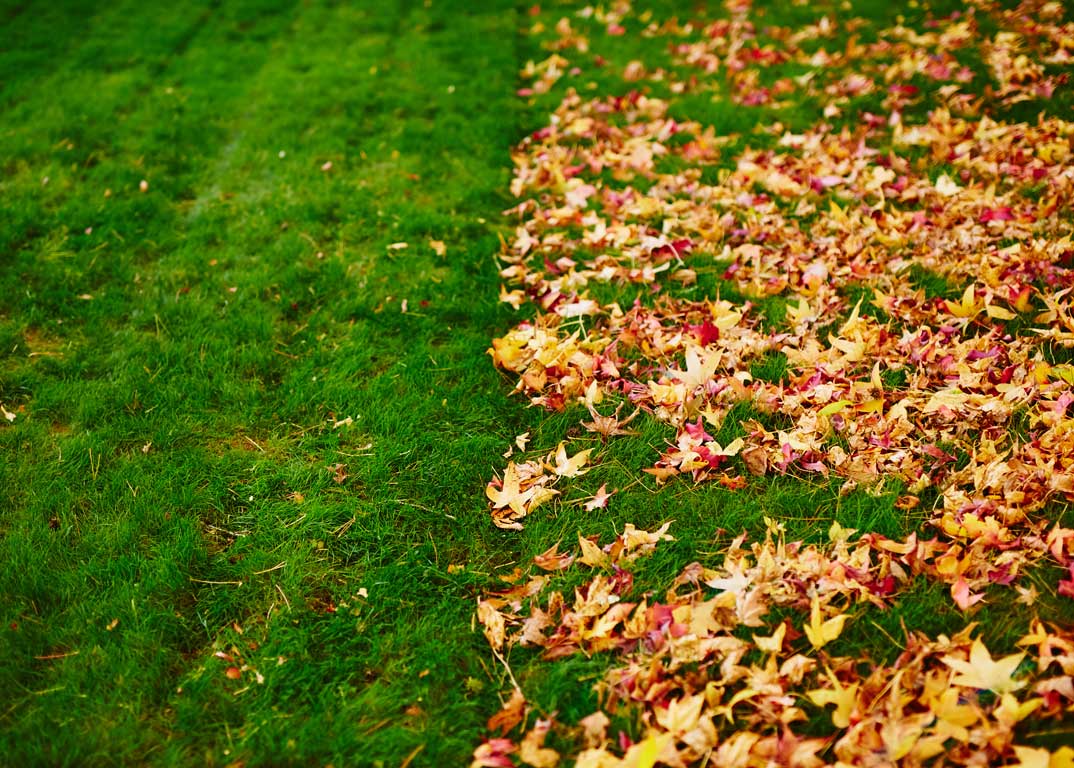
Fix Your Lawn With One Decision
Ah, the annual fall dilemma. You wake up one morning and all the leaves from the trees that surround your lawn have fallen and completely covered your beautiful looking grass. Not only is it another item to add to your to-do list, you’re also a bit unsure of how to go about it. A couple days ago, you noticed your neighbor across the street was mulching their leave dilemma, while your next door neighbor went the bagging route.
Don’t worry, we’ve created a definitive guide for you to quickly read over and get to work on your beautiful looking lawn!
Solve Your Lawn Problem by Mulching
For starters, mulching your leaves will save you a handful of time and it’s a whole lot easier than constantly bending over to rake and bag the leaves. Secondly, mulching your leaves is like adding a natural fertilizer to your lawn. Leaves contain organic matter and nutrients that can be beneficial to your lawn. The nitrogen and other nutrients act as a free fertilizer and mowing them also ensures a balanced spread across your entire lawn.
Over the course of a four-year study, researchers at Cornell University and Michigan State University has shown that mulching your leaves has no effect on grass quality/growth, soil PH or the likelihood of developing weeds or thatch. In fact, their research also suggested that mulched leaves can reduce dandelions. Mulch correctly and you can clean up, fertilize, and nourish your lawn in one swoop without adding and additional costs to your lawn care budget.
However, we understand that not everyone is on-board with mulching their leaves.
Why You Should Love To Bag Grass Clippings
While mulching your leaves can be great for your lawn, there is also a fine line between good and bad in this scenario. Repeatedly mulching your leaves can smother your grass and also carries the chance of leaving yellow or bare spots in your lawn. If leaves are not removed from your lawn or are mulched too heavily in one area, the leaves can block sunlight and air from reaching the grass and actually have a negative effect on your lawn. To make matters worse, if it rains or snows soon after, those leaves can actually act like soggy mats and cause grass disease.
If your lawn only has leaves in a certain area, you might be best suited to pick up the rake and start bagging those leaves.
Doing What Is Best for Your Lawn
There is a time and a place for everything and the same goes for mulching and raking the leaves on your lawn. However, what you do not want to do is wait until there are five or six inches worth of leaves on your lawn, especially if they are wet. The optimum time to get out there and take action on those leaves is when you can still some of your lawn in between the mess. If you find yourself in a crunch for time, feel free to mulch away. Mulching is easier, faster, and far less taxing on your back, as well as your wallet, than raking. Now, if you notice it’s just that one stubborn tree that seems to drop its leaves early every year, a rake might be your safest and best bet. You might even be able to save yourself some time and use your leaf blower to quickly move the leaves to a confined area to save yourself some time on your feet.
